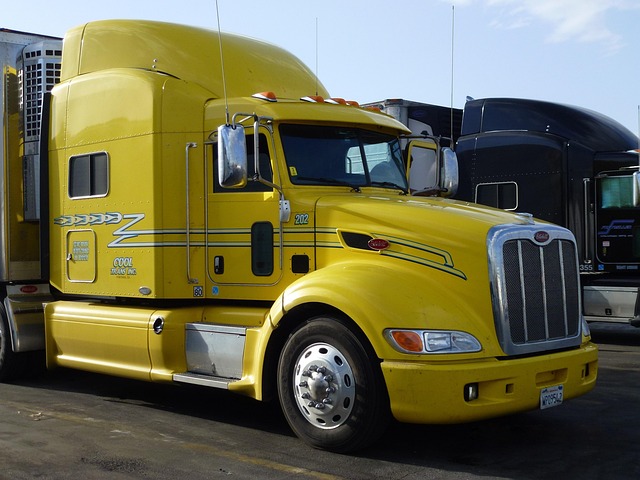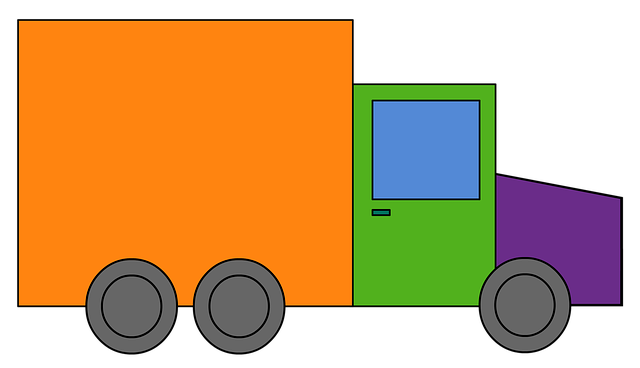Register Car California: Step-by-Step Guide to DMV VIN Verification
Looking to register your car in California? This comprehensive guide walks you through the entire process, ensuring a smooth experience. From understanding the essential requirements for car registrat…….

Looking to register your car in California? This comprehensive guide walks you through the entire process, ensuring a smooth experience. From understanding the essential requirements for car registration in the Golden State to gathering all necessary documents, this article covers it all. We’ll walk you through the step-by-step DMV VIN verification process and show you how to complete registration online or in-person. By the end, you’ll have your vehicle registered and ready to hit the California roads.
- Understand Requirements for Car Registration in California
- Gather Necessary Documents for Vehicle Registration
- Perform DMV VIN Verification Process Step-by-Step
- Complete Online or In-Person California Car Registration
- Pay Registration Fees and Receive Your Registration Papers
Understand Requirements for Car Registration in California

Before diving into the registration process, it’s crucial to understand the requirements for car registration in California. The California Department of Motor Vehicles (DMV) has specific guidelines that must be followed before a vehicle can be legally registered within the state. One key step is the DMV VIN verification process, which ensures that your car meets safety and emissions standards. This involves providing proof of identification, ownership, and vehicle inspection, often facilitated by a mobile vin verification or vin inspection service to streamline the process.
Additionally, your vehicle must be insured, and you’ll need to pay the corresponding registration fees. The DMV offers various methods for submitting applications, including online and in-person, though many opt for the convenience of a mobile vin inspection, allowing them to complete the verification and registration in one trip.
Gather Necessary Documents for Vehicle Registration

Before you begin the registration process, ensure you have all the essential documents ready. The California Department of Motor Vehicles (DMV) requires a range of information to verify your vehicle’s ownership and history. One crucial step is completing a DMV VIN verification, which involves providing the unique Vehicle Identification Number (VIN). This number can be located on the vehicle’s registration certificate or in its engine compartment.
Gathering these documents is essential for a smooth registration process. You’ll need proof of identification, such as a driver’s license or state-issued ID, and perhaps a valid insurance card. Additionally, the DMV may request a title document to establish ownership, especially if buying from a private seller. Consider utilizing mobile VIN inspection services for added convenience, allowing you to complete this step efficiently before visiting your local DMV office.
Perform DMV VIN Verification Process Step-by-Step

To begin the DMV VIN verification process, gather all necessary documents and head to your nearest California Department of Motor Vehicles (DMV) office. First, ensure you have the vehicle’s registration, proof of insurance, and a valid driver’s license. You’ll also need the Vehicle Identification Number (VIN), which can be found on the vehicle’s title or in its manual. A mobile vin verifier or app can assist in quickly retrieving this information if available.
Once at the DMV, locate the appropriate counter for vehicle registration. An agent will guide you through the process, which involves inputting the VIN into their system. They’ll check the vehicle’s history and ensure it meets all safety standards. If everything checks out, they’ll proceed with the inspection, including a visual assessment and potential mobile vin inspection to verify the vehicle’s authenticity and condition. This step is crucial to ensure you’re registering a safe and legal vehicle.
Complete Online or In-Person California Car Registration

In California, registering your car involves a straightforward process that can be completed online or in-person at a DMV office. The first step for both methods is to gather essential documents and information, including proof of identification, vehicle ownership, and insurance. Once prepared, you can choose between a digital experience and a visit to a local DMV.
Online registration is convenient, allowing you to initiate the process from home. You’ll need to provide your vehicle’s details, such as make, model, and year, along with your personal information. The DMV will then perform a DVL (Department of Motor Vehicles) vin verification, cross-checking the Vehicle Identification Number (VIN) data against their records. Alternatively, you can opt for a mobile vin inspection or use a mobile vin verifier service to ensure a smooth transaction from the comfort of your location. In-person registration involves visiting a DMV field office, where a representative will guide you through the process and conduct a thorough VIN verification using the car’s unique identifier.
Pay Registration Fees and Receive Your Registration Papers

After completing your vehicle’s inspection, the next step is to pay the registration fees. The California Department of Motor Vehicles (DMV) charges a set fee for registering your car, which varies based on the type of vehicle and its age. You can typically pay these fees online or in person at any DMV field office. Once your payment is processed, you will receive your Registration Papers, also known as the Certificate of Registration. These documents are essential and should be kept up-to-date to ensure your vehicle’s legal status.
Remember that a valid DMV VIN verification is a crucial part of the registration process. It ensures that your vehicle’s unique Vehicle Identification Number (VIN) is accurate and matches the information on record. You can facilitate this process with a mobile VIN verifier or conduct a vin inspection using official resources to streamline your registration, ensuring a smooth experience for you and your vehicle.
Registering a car in California involves understanding specific requirements, gathering essential documents, and successfully completing the DMV VIN verification process. By following these steps outlined in this article—from preparing necessary paperwork to paying registration fees—you’ll be well on your way to ensuring your vehicle is legally registered in the Golden State. Remember, proper registration not only complies with California laws but also facilitates smoother driving experiences, including access to highways and potential insurance benefits. So, take action now and make registering your car a seamless process!







